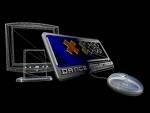 e-mail can be bad for your health. Edward Hallowell, a Boston psychiatrist, has identified a condition that he calls “attention deficit trait” (or ADT for short). Others have called it “online compulsive disorder.” Its main symptoms, says Dr. Hallowell, are “distractability, inner frenzy and impatience.”
e-mail can be bad for your health. Edward Hallowell, a Boston psychiatrist, has identified a condition that he calls “attention deficit trait” (or ADT for short). Others have called it “online compulsive disorder.” Its main symptoms, says Dr. Hallowell, are “distractability, inner frenzy and impatience.” It is caused by the sort of information overload that today’s workers are increasingly being subjected to — thanks to mobile phones, personal digital assistants and wireless e-mail gadgets such as the BlackBerry.
One study of a group of workers in California found that they could manage, on average, to concentrate on a project for only 11 minutes at a time before being distracted by an e-mail, a phone call or a colleague popping in.
However hard it is to be rude to colleagues, e-mail seems to be granted an equal level of respect: 55 per cent of another group of workers said they answer their e-mail messages almost immediately, regardless of how busy they are.
While many of us know not to open letters from bank managers or ex-wives’ lawyers when we arrive home tired on a dark evening, we don’t apply the same principle to e-mail. When planes land nowadays, nervy passengers switch on their BlackBerrys and mobiles almost as fast as they used to light up a cigarette.
Much of the superficial appeal of e-mail lies in the fact that it is impersonal, quick and brief. There is no need for the awkward eye-contact and prolonged introductions necessary in face-to- face encounters, and there is no need for the formal style and grammatical correctness demanded of a letter (although many a minute has been whiled away pondering whether to start an e-mail “Dear Fred,” “Fred” or merely “Hi,” and whether to end it with “Regards,” “Best wishes,” or simply “Tom”).
We think we can open an e-mail, deal with it promptly and move on.
We delude ourselves that the OHIO rule (Only Handle It Once) applies particularly to e-mail messages. But they have a nasty habit of coming back to haunt the sender. Like the response you didn’t want to hear: “I thought I’d copy Anne, Bill, Charley, Dick and Zachary in on this one.”
Or the time- consumer: “If you can’t make the 17th, how about any time between the 18th and the 30th?” Both are the kind of comebacks that the quick response was designed to avoid.
Recent evidence suggests that we should think more carefully about the occasions when it is suitable to use e-mail.
For one thing, e-mail messages are on the record, digitally imprinted for any future litigant to drag unshredded out of the virtual trash. Most face-to-face conversations thankfully remain off the record.
But e-mail messages differ even more fundamentally from face-to-face meetings or phone calls in that they are asynchronous — that is to say, they do not demand an immediate answer.
Asynchronous channels of communication are less efficient at sales or marketing. Companies have a far higher success rate selling by phone — be it, as is now so often the case, from Bangalore and at a supremely inconvenient moment — than they do by e- mail or by traditional asynchronous mail.
More importantly, the outcome of complicated negotiations, whether commercial or political, has been shown to be materially affected by the communications channels that are used.
Don’t (literally) sell the company down the tubes. Dr. Hallowell says that people who work in physical isolation are more likely to suffer from ADT than those who share a lively office.
He recommends that we walk away from the computer screen “every four to six hours for a human moment, a face-to-face exchange with a person you like.”





No comments:
Post a Comment